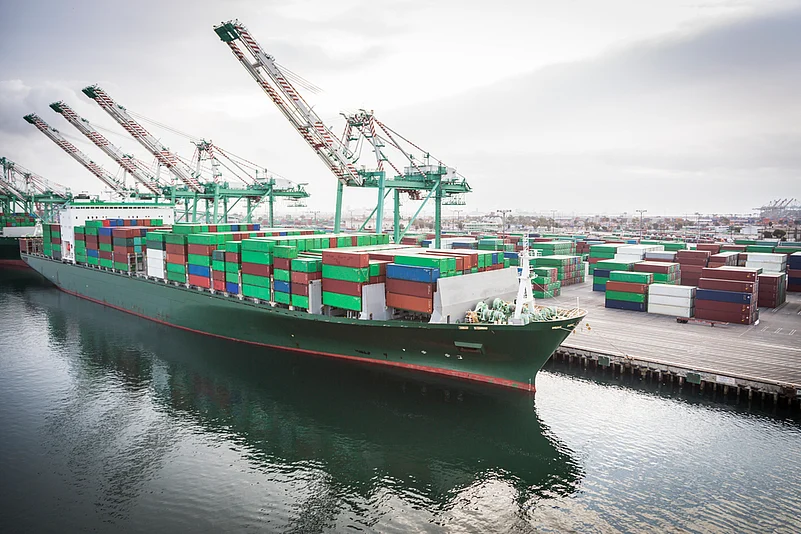Indian government recognizing the contribution of the MSME sector (50 per cent of exports and 33 per cent of GDP) has created an ambitious roadmap for them to grow and scale. The vision to achieve USD 2 trillion with services and goods exports accounting for a trillion dollars each by 2030 is one more instance of the government to up the ante.
This quantum leap in target is akin to what the government proposed achieved for renewable energy in the country. The vision for MSMEs provides opportunity to not only the 1.6 crore plus registered MSMEs currently employing around 11 crores of skilled and unskilled workers but also acts as a stimulus for the start-up ecosystem.
Advertisement
There are reports that suggests a contribution of US $1 trillion to India's total exports by 2028, highlighting the immense influence of MSMEs in shaping India's future economic trajectory.
In the recent years, rapid digitization and the expansion of the ecommerce sector have also significantly bolstered MSMEs in the country. The rise of ecommerce marked a new era of growth for MSMEs, presenting them with opportunities to break down barriers, compete with established players, and broaden their market reach.
By adopting ecommerce, MSMEs have streamlined their operations, reduced costs, and focused on delivering high-quality products and services.
Furthermore, an online presence has allowed them to access a broader market and widen their customer base. MSMEs have benefitted from easy and affordable access to the vast and diverse user-base of ecommerce platforms, which also feature lower barriers to entry.
Advertisement
Ecommerce platforms have also decreased the cost of doing business for MSMEs by eliminating the capital expenses associated with physical infrastructure, logistical networks, and the technological infrastructure required for establishing a standalone individual online presence. The various tools and technology provided by platforms enables MSMEs to operate with higher efficiency.
Currently in its early stages, Indian MSMEs possess significant growth potential in the coming years, thanks to the advantages of e-commerce. To fully harness this potential and maximize its impact on the economy, exports, and job creation, the government must not only promote manufacturing and entrepreneurship but also facilitate international expansion for MSMEs.
Presently, India's e-commerce exports amount to around $2-3 billion, which is about 0.5 per cent of the $447.46 billion total exports in 2022-23. As global e-commerce exports are projected to hit $2 trillion by 2025, Indian e-commerce exports could potentially reach $200-250 billion by 2030.
Recognizing the potential of small and medium-sized enterprises, the government has implemented a variety of policies and schemes to support their growth. For example, the new FTP 2023 has raised the value limit of e-commerce exports through couriers from Rs 5 lakh to Rs 10 lakh per shipment.
Additionally, government programs like the Remission of Duties and Taxes on Exported Products (RoDTEP) scheme offer financial incentives and assistance to MSMEs exploring export opportunities. These initiatives have helped reduce export costs, making Indian MSMEs more competitive in the global market. However, despite these efforts, existing export regulations still impose a significant burden on exporters, hindering MSMEs' export potential.
Advertisement
Currently, less than 1 per cent of Indian MSMEs export goods or services, with nearly 64 per cent reporting an annual turnover of less than 1 Crore. When exporting their products, MSMEs frequently face challenges such as limited access to international markets, insufficient market information, logistical complications, financial limitations, and the absence of economies of scale.
By utilizing ecommerce platforms, MSMEs can tackle these challenges and gain considerable advantages to advance their export efforts. It is crucial for the government to recognize these gaps
and develop policies and regulations that support the growth of MSME through ecommerce exports. One potential solution for the government to consider is permitting both foreign and Indian ecommerce platforms to hold inventory for ecommerce exports.
Advertisement
There are many innovative models around it. One such model is where an ecommerce platform with significant global reach buys inventory from an Indian MSME only on the back of an international B2C order. This would allow Indian MSMEs to gain immediate global market access, without having to become a full-fledged exporter. Such possibilities exist for sellers in other economies against whom India is competing.
Granting e-marketplaces with global reach the ability to own and handle inventory would offer Indian MSMEs comprehensive fulfilment services, such as expedited delivery, improved quality control, inventory management, and order fulfilment, all managed by the ecommerce platform/marketplace. This would not only alleviate cost pressures on MSMEs but also reduce the considerable compliance burden associated with obtaining licenses, fees, and permits required for exports.
Advertisement
Ecommerce platforms have streamlined logistics and shipping procedures for MSMEs, offering affordable solutions for distributing their products to customers across 100 per cent of serviceable pin codes in India. It’s time we allow MSMEs to leverage e-commerce platforms to do the same across the world. Allowing e-commerce companies to hold inventory will be crucial for unlocking the export potential of Indian MSMEs.
As the sector matures in adopting e-commerce, an inventory holding model will spur exports. It is a significant step towards making India a global alternative to China, and in making India a global ecommerce exports hub. Unless the government provides our sellers with a competitive advantage against Chinese, Korean and other exporters, Indian MSMEs will be forced to consolidate domestic operations and forego lucrative margins offered by global markets and hamper India’s global growth story.
Advertisement
The author is retired IAS officer















 Just one email a week
Just one email a week